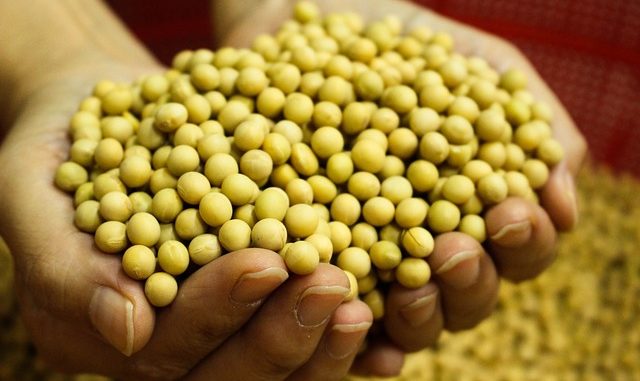
Food allergies have become a greater concern to the population because of their incidence. Here we discuss an issue with a popular health food – soya allergy.
About 5% of young children and up to 4% of adults in Westernised countries are prone to food allergens (Sicherer and Sampson, 2010). An allergy is an immunological response usually mediated by immunoglobulin-E (IgE) when people are exposed to antigens or allergens (Mills et al., 2004). Food allergies usually present as relative minor irritation but in some cases the reaction can be so severe the patient is hospitalised or even fatal in rare cases (USFDA, 2010). In USA law, under the ‘Food Allergen Labeling and Consumer Protection Act of 2004’, (USFDA, 2013), all foods need allergen labelling if they are present. It is the manufacturer’s duty to provide warning labels describing the presence of any known allergen even the potential as in the ‘May contain…’ statement.

Soya or soyabean (Glycine max L.) contributes important ingredients such as its oil, milk and protein as a raw ingredient , or as an important component such as lecithin which is an emulsifier for flavours and other mixes. In the USA, soya now rates in the top 8 most significant food allergens, all of which account for approximately 90% of the food formulations on the market (USFDA).
In the UK, the Allergy UK and the Anaphylaxis Campaign charities provide extensive details in which food products to find soya and how to manage the soya allergy (Allergy UK, 2012; Anaphylaxis Campaign, 2011). At least 34 soyabean proteins are recognised as allergens according to the FARRP Allergen Protein Database 2008. There is currently no cure for the reaction to this allergen and the only way to prevent any allergenic reaction is to avoid all foods containing it.
References On Soya Allergy
Allergy UK (2012) Soya (Soy) Allergy. March . Accessed 20th October 2013
Anaphylaxis Campaign (2011) Soya Allergy factsheet November 2011. Accessed 20th October 2013.
Cordle CT. (2004). Soy protein allergy: incidence and relative severity. J Nutr 134(5): pp. 1213S–9S.
Food Allergy Research and Resourse Program. 2008. Searchable protein database: soybean. Available from: http://www.allergenonline.com/db sort.asp. (no longer working link) Accessed October 21st 2013.
Mills, E.N.C., Jenkins, J.A., Alcocer, M.J.C., Shewry, P.R. (2004) Structural, biological and evolutionary relationships of plant food allergens sensitizing via the gastrointestinal tract. Crit Rev Food Sci Nutr 44 pp. 379–407.
Sicherer, S.H., and Sampson, H.A. (2010) Food Allergy Chapt. 10 J. Allergy Clin. Immun. 125(2), Suppl. 2 pp. S116-S125
U.S. Food and Drug Administration. (2010). Food Allergies: What you need to know. June https://www.fda.gov/food/ingredientspackaginglabeling/foodallergens/ucm079311.htm Accessed 21st October 2013 and relinked 1st September 2017. No longer accessible.
U.S. Food and Drug Administration. (2013) Food Allergens Guidance Documents & Regulatory Information Guidance for Industry. https://www.fda.gov/food/guidance-documents-regulatory-information-topic-food-and-dietary-supplements/food-allergens-and-gluten-free-guidance-documents-and-regulatory-information. Accessed 30th April 2019

Leave a Reply